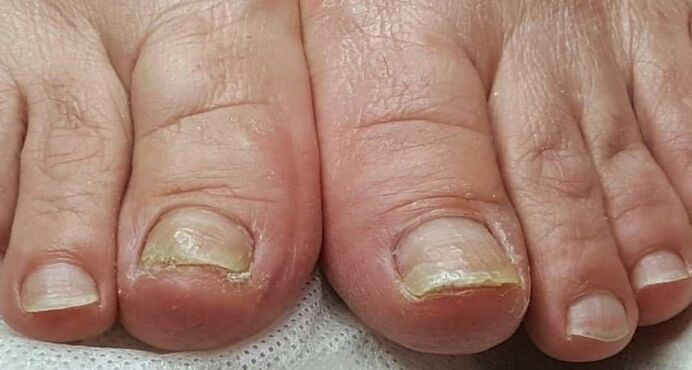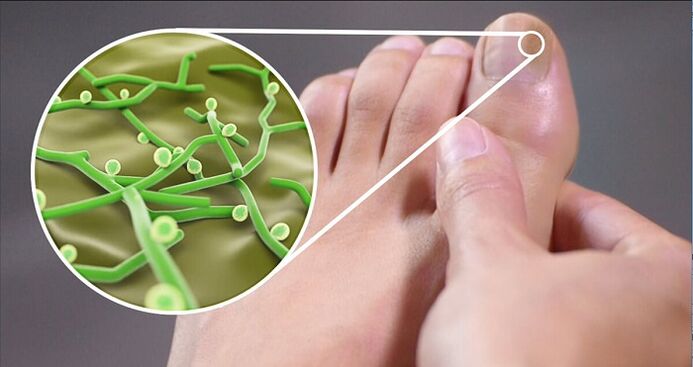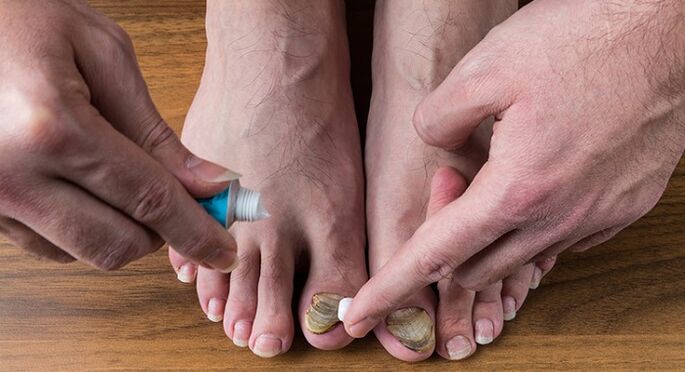Few people know what skin fungus is like on the feet, even though there is this infection. It is ignored that many people count a fungal infection as due to a common irritation or allergic reaction, until they begin treatment at an advanced stage as the disease progresses. Durable fungal infections, according to statistics, 20% of the total population is exposed to them.
What is a fungal infection like?
Fungi belong to the category of infectious diseases that affect the skin, especially on the feet. There are several types of disease, but the most common is mycosis. The fungus is hardy, it can adapt to almost any conditions. Even if one gets rid of the disease, recurrence is often inevitable, as fungal spores survive with clothing and shoes. In most cases, mycosis affects the nail plates and skin of the feet.
Few know what foot fungus is like. Fungi consist of several types, each with its own symptoms and manifestations:
- the early stages of the fungus are indicated by redness of the skin, swelling and microcracks;
- the fungus continues to progress, and the skin peels off and is covered with reddish-pink spots;
- if the disease is not treated properly, then the fungal infection spreads to the nail plate, changing its color, shape and structure.
The last stage is characterized by exfoliation of the skin, as well as the appearance of deep cracks that cause pain and bleeding. At all stages of development, the fungus on the toes manifests itself as itching, which is often unbearable. To accurately describe the onset of the disease, see the pictures on this topic.

The process of getting a fungal infection
Fungi attack people regardless of their age and professional activities. The infection is easily transmitted from an infected person to a healthy person (especially when wearing other people’s shoes). You can also be infected in public places such as baths, saunas and swimming pools. Getting to the skin, the fungus gradually begins to destroy the nail plate, while moving throughout the body. That is why the advanced stage of the disease depends only on complex therapies (creams, ointments, drops and tablets).
Risk groups for contracting fungal infections include certain categories of people:
- enterprise employees who attend public baths after a work shift;
- people who are professionally involved in sports;
- military personnel (mostly sailors);
- utility workers;
- miners.
Fungal infections often strike housewives and people whose professional duties are directly related to water.

Skin fungus: diagnosis and treatment
After knowing what kind of skin fungus on the feet, you can immediately determine the disease. But self -treatment in this case is not appropriate, because initially it is necessary to identify the type of pathogen and its form. This can only be done in a medical facility. If a person, with external signs, suspects that he has skin fungus, then he should immediately see a dermatologist.
The specialist must make an initial examination of the patient, perform the necessary tests (complete blood count, microscopy). If the diagnosis is confirmed, then the person is given the necessary treatment. These can be creams, topical ointments, and oral tablets. Only a doctor who decides how to treat the disease, it is not recommended to prescribe antifungal drugs for himself.

Folk medicine
In the early stages of disease development or in addition to drug treatment, traditional medicine is perfect. There are several ways to get rid of foot fungus. To cure fungus on the skin, it is recommended to prepare the color of banana plants or chamomile flowers. To do this, you need to take 2 tbsp. l herbs and pour 200 ml of boiling water. Tingtur must be cooled, poured into the basin and the lower leg there for 15-20 minutes. After that, wipe your feet with a paper towel and wipe with birch tar, paying special attention to the affected skin. The procedure must be repeated daily until the symptoms of the disease disappear completely.
If the nail plate is affected by fungus, then the treatment will take longer. Of traditional medicine, iodine and 9% vinegar are most often used. The liquid must be combined in equal proportions and the affected nail must be lubricated with the resulting remedy. In this case, it is recommended to cut the nail plate as much as possible.
Folk remedies are very effective in some cases. However, it is not recommended to use it at a later stage of the disease, when the fungal infection has already entered the bloodstream. In this case, it is better to contact a specialist for help, who can advise not only efficient, but also safe treatment.
Skin fungus does not pose a great danger to human health, but often causes discomfort, because the affected parts of the skin and nails do not look very attractive. The presence of such a disease prevents a person from entering public places (swimming pools, saunas, water parks), despite the fact that infections in these institutions are the most common. As a precaution, you must adhere to the rules of personal hygiene and monitor your health.

























